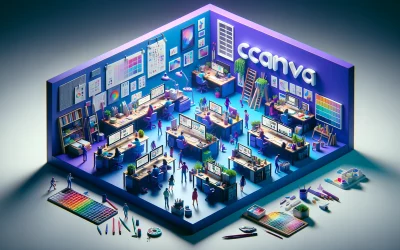AI video tools are becoming increasingly popular among content creators, marketers, and businesses. These tools use artificial intelligence and machine learning algorithms to automate various aspects of video production, such as editing, captioning, and animation. By leveraging the power of AI, users can create high-quality videos quickly and easily, without the need for extensive technical skills or expensive equipment.
One of the main benefits of AI video tools is their ability to generate subtitles and captions automatically. This is particularly useful for businesses and content creators who want to make their videos more accessible to a wider audience. AI-powered speech-to-text technology can transcribe spoken words into text, while text-to-speech technology can convert written text into natural-sounding voiceovers. Additionally, AI video tools can also help users create engaging video animations, which can be used to promote products, services, or ideas.
Overview of AI Video Tools
AI video tools are software applications that use artificial intelligence to automate and simplify the video creation process. These tools can help individuals and businesses create professional-looking videos without the need for expensive equipment or technical expertise.
One of the key features of AI video tools is their ability to automate tasks such as video editing, captioning, and even scriptwriting. This can save users a significant amount of time and effort compared to traditional video production methods.
Another benefit of AI video tools is their ability to generate personalized video content. By analyzing user data and preferences, these tools can create videos that are tailored to the needs and interests of specific audiences.
AI video tools are also becoming more accessible, with many options available for free or at a low cost. This makes them an attractive option for small businesses and individuals who may not have the budget for traditional video production.
Video Editing AI
Video editing can be a time-consuming and complex process, but AI video editing software can help streamline the process. With AI video editing software, users can automate tasks such as removing silence, adding subtitles, and even generating new video content.
One of the best AI video editing software options on the market is Kapwing. Kapwing’s Smart Cut feature automatically removes silence in dialogue, white noise, and silences, making it easy for users to create engaging videos quickly. The software also offers repurposing tools, allowing users to resize videos for different platforms and create video collages.
Another great AI video editing software option is InVideo. InVideo offers a variety of AI-powered features, including text-to-speech, auto-subtitling, and even an AI-powered video assistant that can help users create video content from scratch. The software also offers a library of pre-made templates and stock footage, making it easy for users to create professional-looking videos without any prior experience.
For those looking for a more budget-friendly option, VEED.io is a great choice. VEED.io offers AI-powered features such as auto-transcribing, text-to-speech, and audio cleanup, as well as an extensive library of graphics, animated gifs, and stickers. The software is entirely browser-based, making it easy to use on any device without the need for downloads or installations.
Content Creation AI
Content creation is an essential part of video production, and AI tools can help streamline the process. These tools use machine learning algorithms to generate content, such as text, images, and videos, in a matter of seconds.
One popular tool is Runway, which offers over 30 AI-powered creative tools. It is a versatile product that can meet the needs of filmmakers, artists, graphic designers, and content creators for YouTube and TikTok. Another tool is Jasper, which uses AI to generate blog posts, social media posts, and other types of content.
Synthesia is another content creation AI tool that specializes in video generation. It uses AI to generate videos from text, making it easy to create engaging video content quickly. Canva is a popular graphic design tool that uses AI to generate designs, logos, and other graphics.
AI Video Analysis
AI Video Analysis is a powerful technology that uses computer vision and machine learning to extract insights from videos. With up to 500 hours of video uploaded to YouTube every minute, it is a challenge for analysts to analyze this content. Thankfully, AI Video Analysis Tools have emerged to help analysts detect objects, movements, and patterns in videos.
One of the most significant benefits of using AI Video Analysis Tools is the ability to analyze video streams to a depth impossible for human eyes to achieve. For instance, Google Cloud Video Intelligence is equipped with pre-trained models capable of recognizing over 20,000 objects, activities, and scenes in both stored and streaming videos. Additionally, AI Video Analysis Tools can detect and track objects, such as people, cars, and animals, and recognize their movements and behaviors.
AI Video Analysis Tools can also help with post-production tasks, such as video editing and captioning. For example, Rawshorts is a powerful tool that can generate subtitles using speech-to-text and create natural-sounding voiceovers using text-to-speech. Additionally, InVideo is a video editing tool that uses AI to suggest edits and transitions based on the content of the video.
AI for Video Compression
Video compression is a vital process that ensures video files are small enough to be easily shared or stored without losing quality. AI video compression tools are becoming increasingly popular due to their ability to reduce video file sizes without compromising quality.
One such tool is Wavel Studio, an AI-driven video compression tool that allows users to compress videos without compromising quality. With Wavel Studio, users can compress videos up to 90% without losing quality.
Another popular tool is Beamr, which uses NVIDIA GPU video encoding to reduce video storage. Beamr is designed to take video compression using AI to new heights. With its sleek and user-friendly interface, even newcomers can use it to compress videos without losing quality.
AI video compression tools are also being used in the streaming industry to reduce bandwidth costs. By using AI video compression, streaming services can deliver high-quality videos to users while using less bandwidth.
AI in Video Distribution
In addition to creating captivating videos, AI can also help in video distribution. AI-powered video distribution tools can help businesses reach their target audience more effectively. These tools use machine learning algorithms to analyze viewer behavior and preferences, and then use that information to optimize video distribution.
One such tool is Vidyard, which uses AI to analyze viewer engagement with videos and then recommends personalized content to keep them engaged. Another tool, Wistia, uses AI to analyze viewer behavior and then automatically generates video playlists that are tailored to each viewer’s interests.
AI-powered video distribution tools can also help businesses optimize their video distribution across different channels. For example, tools like TubeMogul can automatically distribute videos to multiple platforms, including YouTube, Facebook, and Twitter, and then analyze the performance of each video on each platform.
Interactive Video Tools
Interactive videos are a powerful way to engage with viewers and keep them interested in the content. These videos allow the audience to interact with the video by clicking on buttons, answering questions, and making choices that determine the direction of the video. With AI-powered interactive video tools, creators can take their videos to the next level and create engaging, personalized experiences for their viewers.
One of the best AI-powered interactive video tools is Cinema8. This platform offers a variety of interactive features, including live streams, 360-degree videos, and AI-created videos. With Cinema8, creators can easily create branching interactive videos that allow viewers to make choices that affect the outcome of the video. The platform also offers a library of ready-to-use templates, making it easy to create professional-looking interactive videos.
Another great option is HapYak. This platform offers a range of interactive features, including quizzes, polls, and annotations. Creators can easily add these interactive elements to their videos, making it easy to engage with viewers and keep them interested in the content. HapYak also offers powerful analytics tools, allowing creators to track viewer engagement and make data-driven decisions about their content.
Finally, Vyond is another great option for creating interactive videos. This platform offers a variety of animation tools, allowing creators to easily create animated characters and scenes. With Vyond, creators can also add interactive elements to their videos, such as buttons and clickable objects. The platform also offers a library of pre-built templates, making it easy to create professional-looking videos quickly.
AI Video Accessibility
AI video tools have made it easier for content creators to produce high-quality videos without the need for expensive equipment or technical expertise. With the help of AI-powered tools, users can create videos that are accessible to a wider audience, including those with disabilities.
One way that AI video tools are improving accessibility is by providing closed captioning and subtitles. This feature allows viewers to follow along with the video even if they are hard of hearing or in a noisy environment. Some AI video tools, such as Rawshorts, even offer automatic speech-to-text and text-to-speech features, making it easier for creators to add captions and voiceovers to their videos.
Another way that AI video tools are improving accessibility is by providing tools for video editing. With the help of AI-powered tools like Runway, creators can quickly and easily edit their videos to include audio descriptions, visual aids, and other features that make their videos more accessible to a wider audience.
Industry-Specific Applications
Marketing
AI video tools are being used in marketing to create engaging videos that attract and retain customers. With AI, marketers can create personalized videos that are tailored to the needs and preferences of individual customers. AI video tools can analyze customer data to create videos that are more likely to resonate with customers. For example, a company can use AI video tools to create a video that showcases the features of a product that a customer has previously shown interest in.
Education
AI video tools are also being used in education to create educational videos that are more engaging and effective. With AI, educators can create videos that are tailored to the needs and learning styles of individual students. For example, a teacher can use AI video tools to create a video that explains a difficult concept in a way that is easier for a student to understand.
Entertainment
AI video tools are being used in the entertainment industry to create engaging videos that entertain and inform viewers. With AI, content creators can create videos that are more engaging and entertaining. For example, a content creator can use AI video tools to create a video that features a virtual host who interacts with viewers in real-time.
AI video tools are revolutionizing the way videos are created and consumed in various industries. With AI, videos can be created faster, more efficiently, and more effectively than ever before.




